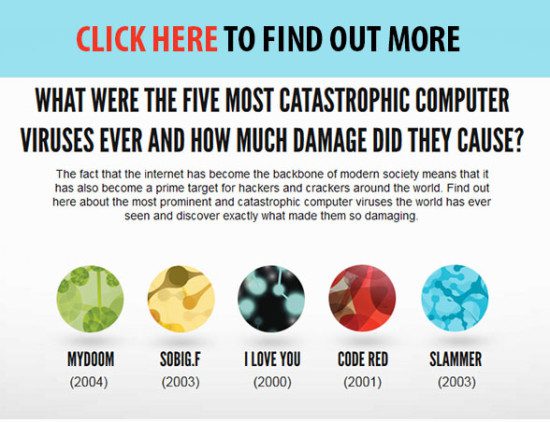Imagine life without the internet? It has enabled everyone with even a half-decent connection, be it wireless or via an Ethernet cable, to access information in a matter of seconds, but with its advent came a slew of security risks to computers worldwide, growing in tandem with internet use.
In the early part of the last decade, the occasional virus gave way to mega-viruses which wreaked havoc on a global scale. As shown by the infographic below, the biggest viruses of all-time tended to cost billions at a time. Through malicious pop-up ads, spam emails and booby-trapped websites, they could infect any computer where the user clicked on the wrong link, seeing them spread widely.
Today, viruses and other forms of malware have become far more sophisticated. Rather than just using malicious adverts disguised as something more innocuous or a spam message, they are infecting entire websites without visitors realising. A recent example involving Yahoo and digital currency Bitcoin shows how viruses have developed over recent years.
Malware in all its forms has become more difficult to spot, but with that, security has been ramped up, with awareness growing from individual web users and businesses. Some viruses like Cryptolocker have followed the same template as their predecessors, although as the web has changed, they have managed to find new loopholes in order to infect.
The opinions expressed in this post belongs to the individual contributors and do not necessarily reflect the views of Information Security Buzz.




